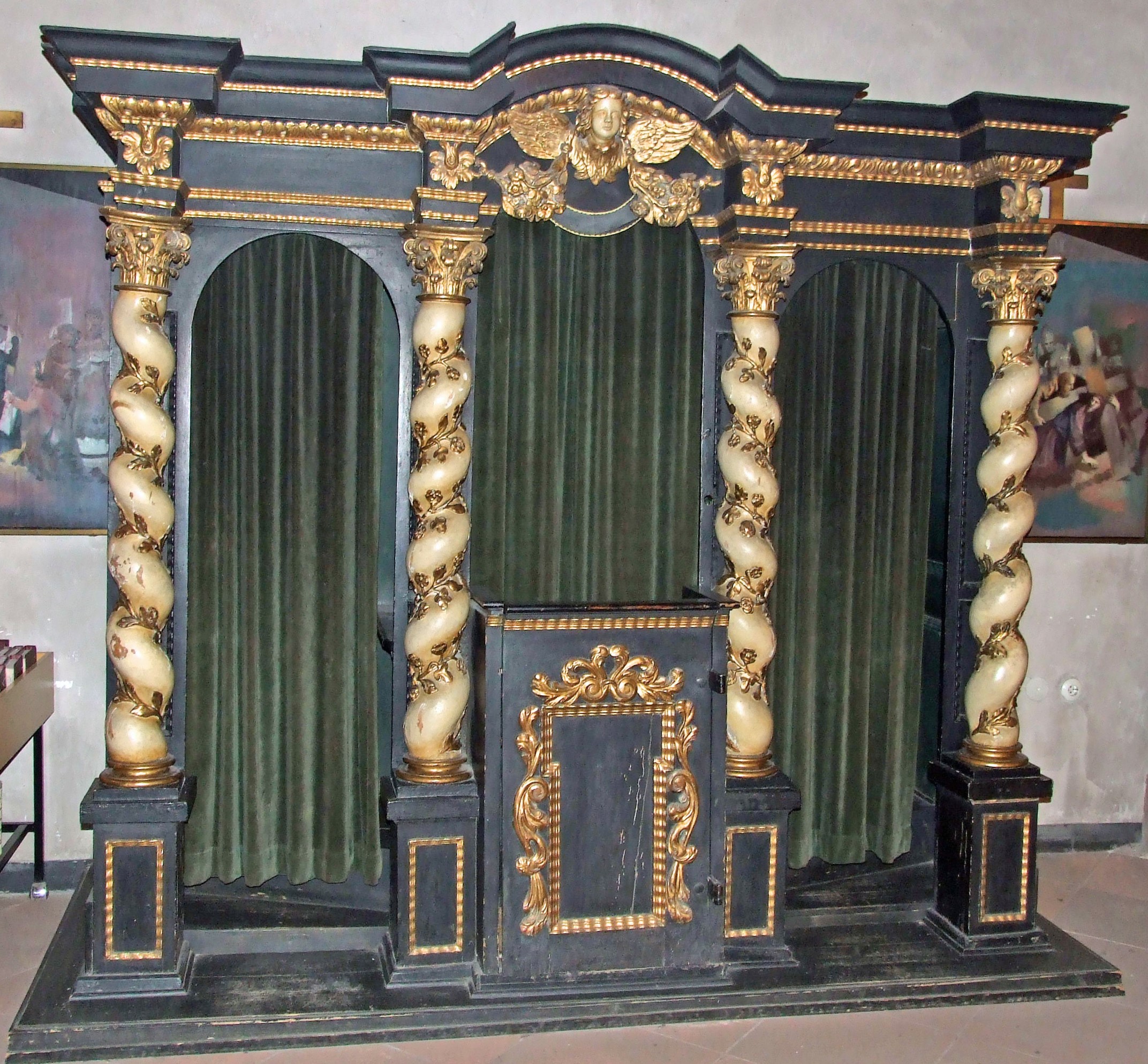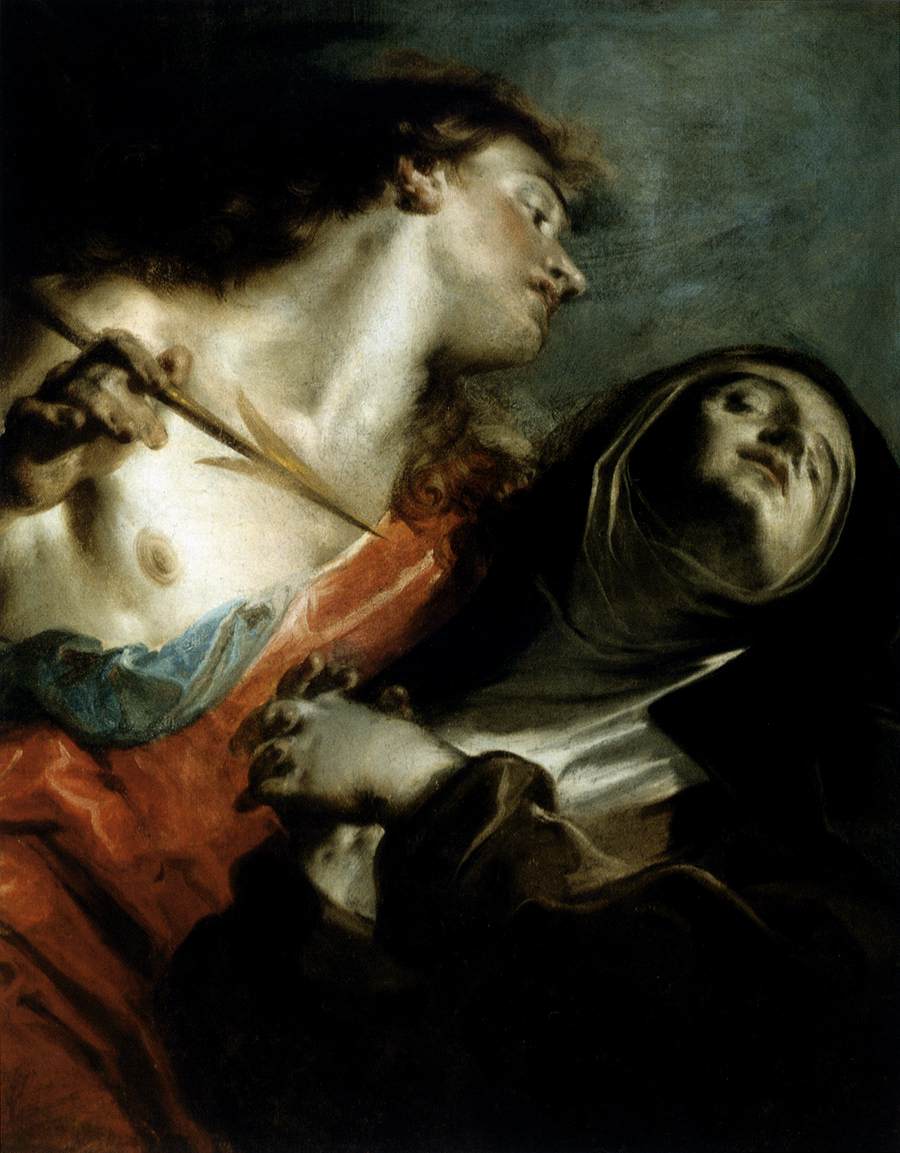|
Clare Of Montefalco
Clare of Montefalco (Italian: ) (c. 1268 – August 18, 1308), also called Saint Clare of the Cross, was an Augustinian nun and abbess. Before becoming a nun, Clare was a member of the Third Order of St. Francis (Secular). She was canonized by Pope Leo XIII on December 8, 1881. Life Clare was born in Montefalco, in Umbria, likely in the year 1268. She was born into a well-to-do family, the daughter of Damiano and Iacopa Vengente.Saint Clare of Montefalco . Villanova University Her father, Damiano, had built a hermitage within the town of Montefalco. Clare's older sister Joan (''Giovanna'' in Italian) and her friend Andreola lived as |
Clare Of Assisi
Clare of Assisi (born Chiara Offreduccio and sometimes spelled Clara, Clair, Claire, Sinclair; 16 July 1194 – 11 August 1253) was an Italian saint and one of the first followers of Francis of Assisi. She founded the Order of Poor Ladies, a monastic religious order for women in the Franciscan tradition, and wrote their Rule of Life, the first set of monastic guidelines known to have been written by a woman. Following her death, the order she founded was renamed in her honour as the Order of Saint Clare, commonly referred to today as the Poor Clares. Her feast day is on 11 August. Life Clare was born in Assisi during the High Middle Ages, the eldest daughter of Favarone or Favorino Sciffi, Count of Sasso-Rosso and his wife Ortolana. Traditional accounts say that Clare's father was a wealthy representative of an ancient Roman family, who owned a large palace in Assisi and a castle on the slope of Mount Subasio.Robinson, Paschal (1908). "St. Clare of Assisi." ''The ... [...More Info...] [...Related Items...] OR: [Wikipedia] [Google] [Baidu] |
Religious Habit
A religious habit is a distinctive set of religious clothing worn by members of a religious order. Traditionally some plain garb recognizable as a religious habit has also been worn by those leading the religious eremitic and anchoritic life, although in their case without conformity to a particular uniform style. Uniformity and distinctiveness by order often evolved and changed over time. Interpretation of terms for clothes in religious rules could change over centuries. Furthermore, every time new communities gained importance in a cultural area the need for visual separation increased for new as well as old communities. Thus, modern habits are rooted in historic forms, but do not necessarily resemble them in cut, colour, material, detail or use. In Christian monastic orders of the Catholic, Lutheran and Anglican Churches, the habit often consists of a tunic covered by a scapular and cowl, with a hood for monks or friars and a veil for nuns; in apostolic orders it may be a ... [...More Info...] [...Related Items...] OR: [Wikipedia] [Google] [Baidu] |
Confession (religion)
Confession, in many religions, is the acknowledgment of one's sins (sinfulness) or wrongs. Christianity Catholicism In Catholic teaching, the Sacrament of Penance is the method of the Church by which individual men and women confess sins committed after baptism and have them absolved by God through the administration of a priest. The Catholic rite, obligatory at least once a year for serious sin, is usually conducted within a confessional box, booth or reconciliation room. This sacrament is known by many names, including penance, reconciliation and confession. While official Church publications usually refer to the sacrament as "Penance", "Reconciliation" or "Penance and Reconciliation", many clergy and laypeople continue to use the term "Confession" in reference to the Sacrament. For the Catholic Church, the intent of this sacrament is to provide healing for the soul as well as to regain the grace of God, lost by sin. A perfect act of contrition, wherein the penitent ex ... [...More Info...] [...Related Items...] OR: [Wikipedia] [Google] [Baidu] |
Extreme Unction
In the Catholic Church, the anointing of the sick, also known as Extreme Unction, is a Catholic sacrament that is administered to a Catholic "who, having reached the age of reason, begins to be in danger due to sickness or old age", except in the case of those who "persevere obstinately in manifest grave sin". Proximate danger of death, the occasion for the administration of Viaticum, is not required, but only the onset of a medical condition of serious illness or injury or simply old age: "It is not a sacrament for those only who are at the point of death. Hence, as soon as anyone of the faithful begins to be in danger of death from sickness or old age, the fitting time for him to receive this sacrament has certainly already arrived." Despite that position, anointing of the sick has in practice often been postponed until someone is near dying, in spite of the fact that in all celebrations of this sacrament, the liturgy prays for recovery of the health of the sick person if that ... [...More Info...] [...Related Items...] OR: [Wikipedia] [Google] [Baidu] |
Italian Language
Italian (''italiano'' or ) is a Romance language of the Indo-European language family that evolved from the Vulgar Latin of the Roman Empire. Together with Sardinian, Italian is the least divergent language from Latin. Spoken by about 85 million people (2022), Italian is an official language in Italy, Switzerland (Ticino and the Grisons), San Marino, and Vatican City. It has an official minority status in western Istria (Croatia and Slovenia). Italian is also spoken by large immigrant and expatriate communities in the Americas and Australia.Ethnologue report for language code:ita (Italy) – Gordon, Raymond G., Jr. (ed.), 2005. Ethnologue: Languages of the World, Fifteenth edition. Dallas, Tex.: SIL International. Online version Itali ... [...More Info...] [...Related Items...] OR: [Wikipedia] [Google] [Baidu] |
Spiritual Director
Spiritual direction is the practice of being with people as they attempt to deepen their relationship with the divine, or to learn and grow in their personal spirituality. The person seeking direction shares stories of their encounters of the divine, or how they are cultivating a life attuned to spiritual things. The director listens and asks questions to assist the directee in his or her process of reflection and spiritual growth. Spiritual direction advocates claim that it develops a deeper awareness with the spiritual aspect of being human, and that it is neither psychotherapy nor counseling nor financial planning. Historians of philosophy like Ilsetraut and Pierre Hadot have argued that spiritual direction was already practiced and recommended by the main schools of philosophy, as well as by physicians like Galen, as part of spiritual practices in Ancient Greece and Rome. Roman Catholic forms While there is some degree of variability, there are primarily two forms of sp ... [...More Info...] [...Related Items...] OR: [Wikipedia] [Google] [Baidu] |
Heart
The heart is a muscular organ in most animals. This organ pumps blood through the blood vessels of the circulatory system. The pumped blood carries oxygen and nutrients to the body, while carrying metabolic waste such as carbon dioxide to the lungs. In humans, the heart is approximately the size of a closed fist and is located between the lungs, in the middle compartment of the chest. In humans, other mammals, and birds, the heart is divided into four chambers: upper left and right atria and lower left and right ventricles. Commonly the right atrium and ventricle are referred together as the right heart and their left counterparts as the left heart. Fish, in contrast, have two chambers, an atrium and a ventricle, while most reptiles have three chambers. In a healthy heart blood flows one way through the heart due to heart valves, which prevent backflow. The heart is enclosed in a protective sac, the pericardium, which also contains a small amount of fluid. The wall ... [...More Info...] [...Related Items...] OR: [Wikipedia] [Google] [Baidu] |
Quo Vadis
''Quō vādis?'' (, ) is a Latin phrase meaning "Where are you marching?". It is also commonly translated as "Where are you going?" or, poetically, "Whither goest thou?" The phrase originates from the Christian tradition regarding Saint Peter's first words to the risen Christ during their encounter along the Appian Way. According to the apocryphal Acts of Peter (Vercelli Acts XXXV; late 2nd century AD), as Peter flees from crucifixion in Rome at the hands of the government, and along the road outside the city, he meets the risen Jesus. In the Latin translation, Peter asks Jesus, "''Quō vādis?''" He replies, "''Rōmam eō iterum crucifīgī''" ("I am going to Rome to be crucified again"). Peter then gains the courage to continue his ministry and returns to the city, where he is martyred by being crucified upside-down. The Church of Domine Quo Vadis in Rome is built where the meeting between Peter and Jesus allegedly took place. The words "quo vadis" as a question also occ ... [...More Info...] [...Related Items...] OR: [Wikipedia] [Google] [Baidu] |
Jesus
Jesus, likely from he, יֵשׁוּעַ, translit=Yēšūaʿ, label=Hebrew/Aramaic ( AD 30 or 33), also referred to as Jesus Christ or Jesus of Nazareth (among other names and titles), was a first-century Jewish preacher and religious leader; he is the central figure of Christianity, the world's largest religion. Most Christians believe he is the incarnation of God the Son and the awaited Messiah (the Christ) prophesied in the Hebrew Bible. Virtually all modern scholars of antiquity agree that Jesus existed historically. Research into the historical Jesus has yielded some uncertainty on the historical reliability of the Gospels and on how closely the Jesus portrayed in the New Testament reflects the historical Jesus, as the only detailed records of Jesus' life are contained in the Gospels. Jesus was a Galilean Jew who was circumcised, was baptized by John the Baptist, began his own ministry and was often referred to as "rabbi". Jesus debated with fellow Jews on ho ... [...More Info...] [...Related Items...] OR: [Wikipedia] [Google] [Baidu] |
Religious Ecstasy
Religious ecstasy is a type of altered state of consciousness characterized by greatly reduced external awareness and expanded interior mental and spiritual awareness, frequently accompanied by visions and emotional (and sometimes physical) euphoria. Although the experience is usually brief in time, there are records of such experiences lasting several days or even more, and of recurring experiences of ecstasy during one's lifetime. In Sufism, the term is referred to as '' wajad'' and the experience is referred to as either ''jazbah (jadbah o jedbah for Maghreb)'' or ''majzoobiyat''. Context The adjective "religious" means that the experience occurs in connection with religious activities or is interpreted in context of a religion. Journalist Marghanita Laski writes in her study "Ecstasy in Religious and Secular Experiences", first published in 1961: "Epithets are very often applied to mystical experiences including ecstasies without, apparently, any clear idea about the d ... [...More Info...] [...Related Items...] OR: [Wikipedia] [Google] [Baidu] |
Epiphany (holiday)
Epiphany ( ), also known as Theophany in Eastern Christian traditions, is a Christian feast day that celebrates the revelation (theophany) of God incarnation (Christianity), incarnate as Jesus Christ. In Western Christianity, the feast commemorates principally (but not solely) the Biblical Magi, visit of the Magi to the Christ Child, and thus Jesus Christ's physical manifestation to the Gentiles. It is sometimes called Three Kings' Day, and in some traditions celebrated as Little Christmas. Moreover, the feast of the Epiphany, in some Christian denominations, denominations, also initiates the liturgical season of Epiphanytide. Eastern Christians, on the other hand, commemorate the baptism of Jesus in the Jordan River, seen as his manifestation to the world as the Son of God. The spot marked by Al-Maghtas in Jordan, adjacent to Qasr al-Yahud in the West Bank, is considered to be the original site of the baptism of Jesus and the ministry of John the Baptist. The traditional dat ... [...More Info...] [...Related Items...] OR: [Wikipedia] [Google] [Baidu] |








